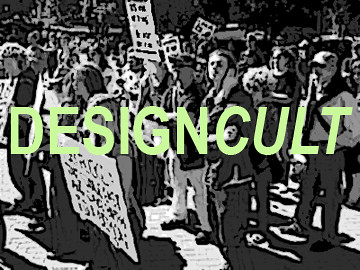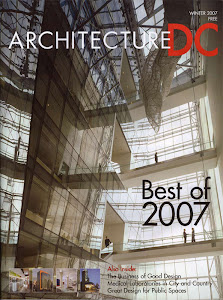 The title of the July 6th, Washington Post article read "Drivers Feeling Shunned by D.C.: City Less Welcoming to Suburban Cars".
The title of the July 6th, Washington Post article read "Drivers Feeling Shunned by D.C.: City Less Welcoming to Suburban Cars".
Two days later, Alice Swanson, a DC resident, was struck and killed by a garbage truck in Dupont Circle.
While the two instances might not immediately seem interconnected, there is an underlying thread here. In the Washington Post article that reported Swanson's death, a coworker recalled that "she was nervous because of D.C. traffic".
It is this nervousness on the part of District residents that the DC government is concerned about. And it seems that it is for that very reason that DC is now exploring various options to help return the streets to the residents of the District.
The July 6th article mentions several alternatives that are being considered. The most ambitious, it seems, is the possibility of closing the third street tunnel, which connects I-395 to New York Avenue (Rte. 50), and is a well-traveled "short-cut" for Virginians and Marylanders who prefer not to travel the beltway or I-295. There is the expected opposition from suburbanites, as well as those which utilize the route to commute into the city on a daily basis. This traffic study, in culmination with a series of other proposed measures, have commuters crying foul at the city's tactics, claiming that DC either is attempting to punish commuters for those who drive aggressively, or simply to levy fees to turn a profit at commuters' expense. (Attempts to pass a commuter tax have been shut down by the federal government.) While I'm sure that those like myself who live in the city and are self-proclaimed urbanists must admit a certain back of the mind sadistic pleasure from the thought of punishing people for living in the 'burbs, the reality is that DC's efforts here appear to be genuinely aimed at making the District a safer, more walkable city, and in many ways should be lauded.
Back in February I attended the WDCEP program "Leinberger, Wells & Tregoning on Walkable Communities - inDC Economic Trendsetters", the central theme of which was DC as a liveable and walkable community. The event's lead-off presenter, Christopher Leinberger, is a visiting fellow at the Brooking Institution, and author of The Option of Urbanism, where he explores how government policy has favored the development of suburbs, and what can be done to change that. Leinberger contends that there are really only two options for development: walkable urban -or- drivable suburban. Leinberger cites that, for several reasons, DC has seen an influx of new residents - these include the allure to Gen-Xers (thanks in part to TV show set in urban areas) and the fact that the baby-boomers are now empty nesters, and states that to sustain such growth that cities need to maintain walkability through access to resources and public transit. Walkable distance is measured as being no more than 1500-3000 ft.
Ward 6 Councilmember Tommy Wells at the same event reiterated the importance of creating walkable communities, and said that emphasis is being placed on implementing strategies which support and encourage that goal. He admits that some are not as well-received as others, such as parking metering strategies near and around the new Nationals stadium, which, in addition to potentially charging higher rates for on-street parking, also extend metered parking hours. However, as indicated by subsequent meetings with residents in Ward 6 regarding pedestrian safety, it is clear that at least Wells is taking the task of making DC streets safer for pedestrians seriously. His elimination of the one-way traffic flow in the mornings on Constitution Ave, NE is one such policy that has been well-received. Now other similar one-way and reversible lane thoroughfares are under consideration for elimination as well.
As a Ward 6 resident, every morning that I walk to the metro from my house I have to be extremely careful at two intersections which were mentioned in the July 6th article, as well as another: 17th, 18th, and 19th Streets in NE/SE along East Capitol, which is a main access point for MD commuters as well that come in VIA 295 and cut through to the SE/SW Freeway. While improvements to the 11th Street bridges are aimed at creating a better connection between the SE/SW Freeway and 295 to further ease pressures such as these on the cities neighborhood streets, the completion of this work, which will lessen the flow of traffic on Pennsylvania Avenue's Sousa Bridge, is at least five years away.
As for the highly criticized traffic study centered around the closing of the 3rd street tunnel, while it is as of yet indeterminable what the final recommendations will be, it seems that such efforts to ease traffic on certain overly used corridors are in fact quite prudent, especially given that such avenues, such as New York Avenue, were never really intended to handle that volume. I imagine that there will be alternatives that are born from these studies that are less extreme, but I much favor the urbanistic notion of allowing streets to serve pedestrians as well as vehicular traffic -- it has been well illustrated that the faster that traffic moves on a street, the less pleasant the street is to be on from a pedestrian and aesthetic standpoint, and that affects the quality of life on that street for the residents and shop owners...I think that unfortunately, New York Avenue as we know if today is especially a reminder of that, as are nearby Florida Avenue and North Capitol Street.
In the end, what is perhaps most telling is that Washington Post polls of suburban residents and DC residents both illustrated support for what the DC government is doing.
As I pass by the intersection of 18th & K on my way to work on July 23rd I come upon the scene of another hit-and-run -- fortunately not fatal this time. As reported by the Post, "The District has higher pedestrian death rates than New York, Boston, Seattle, Chicago and Los Angeles, with 2.7 deaths per 100,000 people, according to the National Highway Traffic Safety Administration. Pedestrian injuries rose from 586 in 2000 to 725 in 2006." While getting into and around the city will always be an important aspect to residents and commuters, feeling safe and not fearing DC traffic must become a top priority.
Tuesday, August 5, 2008
These Mean Streets
Subscribe to:
Post Comments (Atom)









No comments:
Post a Comment